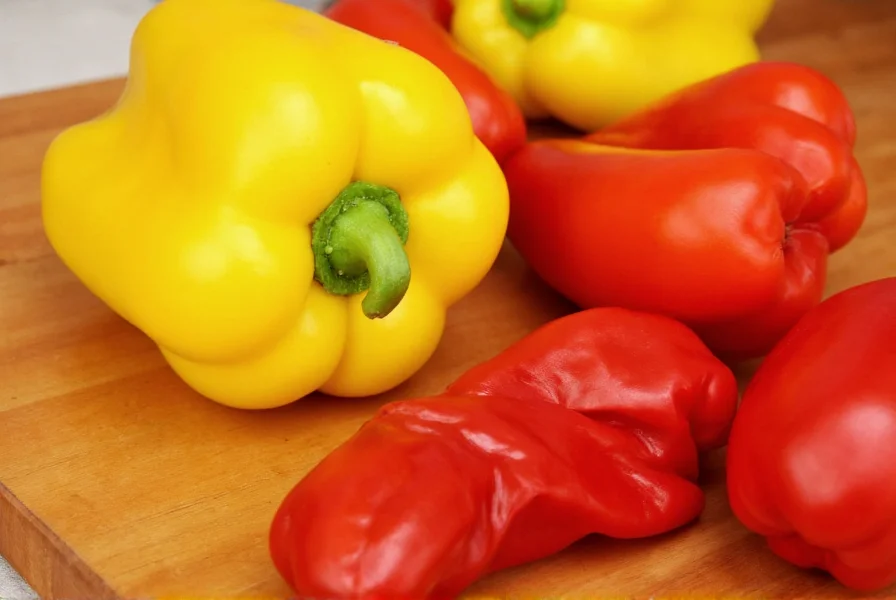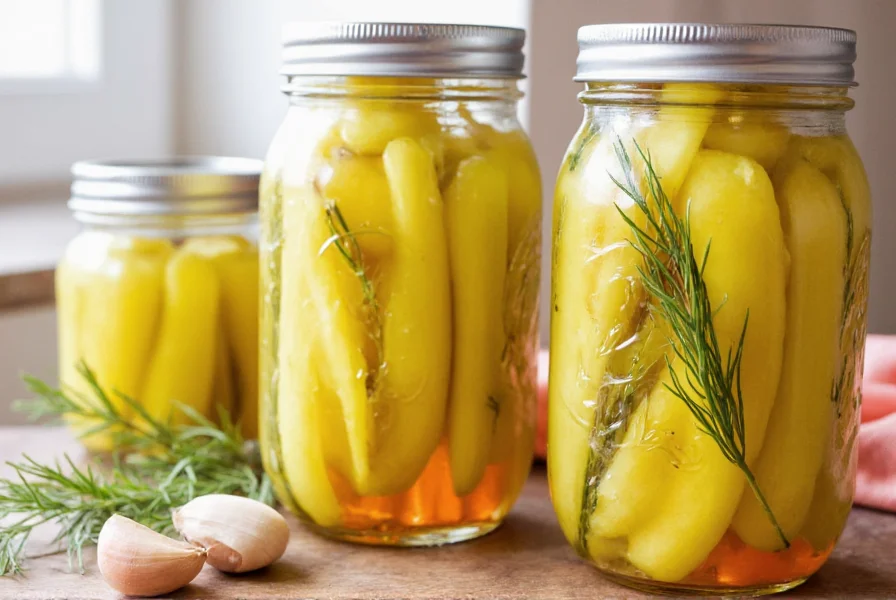Wax peppers offer home cooks and gardeners a versatile option that bridges the gap between sweet bell peppers and spicier varieties. Unlike their close relative the banana pepper, wax peppers develop more heat as they mature while maintaining a distinctive waxy appearance that gives them their name. Understanding their unique characteristics helps culinary enthusiasts make informed choices for recipes and gardening projects.
Physical Characteristics of Wax Peppers
Wax peppers typically grow 4-7 inches long with a curved, tapered shape resembling a banana pepper but with a noticeably smoother, shinier skin. The "waxy" appearance comes from a natural coating that protects the fruit. They begin their growth cycle as pale yellow peppers, gradually turning bright yellow, then orange, and finally deep red when fully mature. This color progression directly correlates with increasing heat levels and flavor complexity.

Flavor Profile and Heat Level Explained
Understanding wax pepper heat level is essential for recipe planning. When yellow, these peppers register between 1,000-5,000 Scoville units—similar to a poblano. As they mature to red, heat increases to 5,000-15,000 units, approaching cayenne territory. This progression makes them incredibly versatile: use yellow wax peppers for mild applications and red ones when more heat is desired.
The flavor profile features bright acidity when young, developing into complex fruity notes with subtle earthiness as they mature. Unlike banana peppers which maintain consistent sweetness, wax peppers develop increasing complexity alongside their heat.
| Pepper Stage | Color | Heat Level (SHU) | Best Culinary Uses |
|---|---|---|---|
| Immature | Pale Yellow | 1,000-3,000 | Salads, sandwiches, mild salsas |
| Partially Mature | Bright Yellow | 3,000-7,000 | Pickling, stir-fries, stuffed peppers |
| Full Mature | Red | 7,000-15,000 | Hot sauces, spicy relishes, roasted dishes |
Wax Pepper vs Banana Pepper: Key Differences
Many home cooks confuse wax pepper vs banana pepper, but several distinguishing factors exist. While both start yellow and share similar shapes, banana peppers maintain consistent sweetness throughout ripening (0-500 SHU), whereas wax peppers develop significant heat. Banana peppers also have thicker walls and a more pronounced curve.
The most reliable way to distinguish them is by examining the stem end: wax peppers have a distinctive waxy sheen and smoother skin texture, while banana peppers appear more matte. When pickled, wax peppers retain their vibrant color better than banana peppers, which often turn a duller yellow.
Culinary Applications and Recipe Ideas
How to use wax peppers in cooking depends on their maturity stage. Yellow wax peppers excel in fresh applications where mild heat is desired:
- Add sliced yellow wax peppers to tuna or chicken salad for subtle heat
- Stuff with cheese and bake for a mild spicy appetizer
- Include in fresh salsas for garden tacos
Red wax peppers shine in cooked applications:
- Roast and blend into a spicy tomato sauce
- Add to Bloody Mary mix for homemade cocktail seasoning
- Preserve through pickling for year-round use

Growing Wax Peppers Successfully
For gardeners interested in growing wax peppers in home garden settings, these plants require 70-80 days to maturity and thrive in warm climates with full sun. Start seeds indoors 8-10 weeks before last frost, then transplant outdoors when soil reaches 65°F (18°C).
Key growing tips:
- Provide consistent moisture but avoid overwatering
- Use well-draining soil with pH 6.0-6.8
- Harvest yellow peppers for milder flavor or wait for red for more heat
- Rotate crops annually to prevent soil-borne diseases
Nutritional Benefits of Wax Peppers
Wax peppers provide significant wax pepper nutritional benefits including high vitamin C content (134% of daily value per 100g), vitamin A, and capsaicin compounds associated with various health benefits. The capsaicin content increases as peppers mature, making red wax peppers particularly valuable for potential metabolic and anti-inflammatory benefits.
Unlike many processed hot sauces, fresh wax peppers contain no additives while delivering flavor complexity and nutritional value. Their versatility makes them an excellent addition to balanced diets for those seeking to incorporate more plant-based foods with mild heat.
Where to Find and Store Wax Peppers
Finding fresh wax peppers can be challenging depending on your location. Check where to buy wax peppers near me options:
- Specialty grocery stores (especially during summer harvest)
- Local farmers' markets (peak season: July-September)
- International markets (often labeled as Hungarian wax peppers)
- Garden centers selling seedlings in spring
Proper storage extends freshness:
- Refrigerate unwashed in crisper drawer: 2-3 weeks
- Freeze after roasting or blanching: 6-8 months
- Pickle for shelf-stable preservation: 1+ year
- Dry mature red peppers for spice blends: indefinitely
Common Questions About Wax Peppers
Are wax peppers hot?
Wax peppers range from mild to medium heat (1,000-15,000 Scoville units). Yellow wax peppers are milder (1,000-5,000 SHU), similar to poblanos, while red mature peppers reach 5,000-15,000 SHU, approaching cayenne heat levels. Their heat increases significantly as they mature from yellow to red.
What's the difference between Hungarian wax peppers and regular wax peppers?
Hungarian wax peppers are a specific variety of wax pepper known for slightly higher heat potential (up to 15,000 SHU) and traditional use in Hungarian cuisine. All Hungarian wax peppers are wax peppers, but not all wax peppers are Hungarian variety. The Hungarian type typically shows more consistent heat development as they mature.
Can I substitute banana peppers for wax peppers in recipes?
You can substitute banana peppers for wax peppers only if you want significantly less heat. Banana peppers (0-500 SHU) are much milder than even yellow wax peppers (1,000-5,000 SHU). For recipes requiring the mild heat of yellow wax peppers, consider using cubanelle peppers instead, which offer similar heat levels with comparable flavor profiles.
How do I reduce the heat of wax peppers?
To reduce wax pepper heat, remove the white pith and seeds where capsaicin concentrates. Soaking sliced peppers in salted water for 15-30 minutes can further reduce heat. Cooking methods like roasting or grilling break down capsaicin compounds, mellowing the heat. For significant heat reduction, use younger yellow peppers rather than mature red ones.
What are the best ways to preserve wax peppers?
The best preservation methods for wax peppers include pickling (ideal for maintaining crunch and color), freezing after roasting (best for cooked applications), and drying mature red peppers (creates intense flavor for spice blends). Pickled wax peppers maintain quality for 1+ year, while frozen peppers last 6-8 months. Dried peppers can be stored indefinitely in airtight containers.











 浙公网安备
33010002000092号
浙公网安备
33010002000092号 浙B2-20120091-4
浙B2-20120091-4